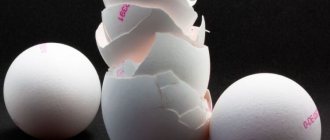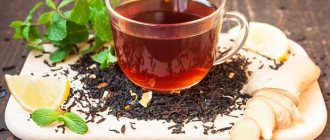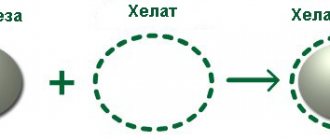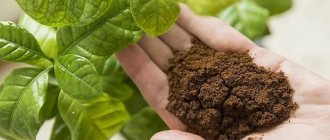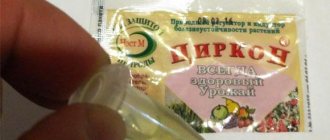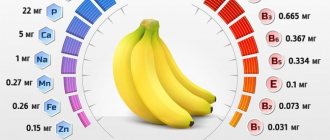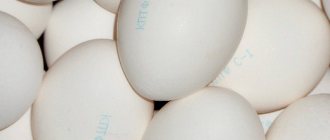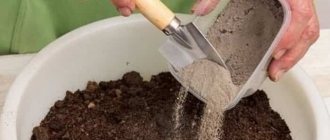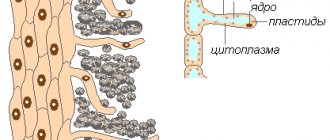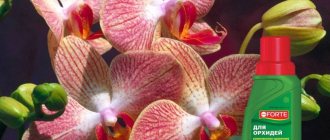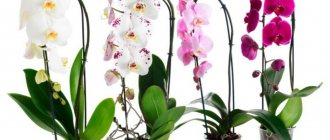Chemistry lesson
First, a very brief description of what eggshells for plants are. Or more precisely, what components it contains and what effect these components have on the soil.
Eggshells are 90-95% calcium carbonate (CaCO3), popularly called limestone. Lime is generally good for increasing or stabilizing soil pH, but the effects of eggshells are very slow. The fact is that in order to dissolve this very lime, carbonic acid (HCO₃) must be present in the soil, which is formed during the growing season in the root system of the plant. And with the help of carbonic acid, a compound (Ca (HCO3)2) is formed - calcium bicarbonate, which in turn forms calcium ions.
What does all this ultimately lead to? First, upon contact with water, the pH value slowly but steadily increases. And secondly, calcium ions released during the reaction with carbon dioxide, as it were, cement the soil, making it more dense.
The conclusion naturally arises: eggshells as a fertilizer are suitable for increasing the pH value of the soil, but under the condition of an absolute calcium deficiency. Therefore, be sure to test the substrate before use.
Signs of excess and deficiency of essential substances
In addition to constantly feeding indoor plants, shells can also be used to replenish the deficiency of certain substances. The main thing is, of course, calcium, which, as you know, the shell of eggs is rich in. But other substances can also be obtained from it. True, their quantity is still not as large as required for a complete diet, and an additional source is needed, for example, phosphorus, magnesium or nitrogen.
Signs of calcium deficiency in a “green pet”
But before you try to fill this deficiency, you should understand that it still exists. If flowers lack calcium, then the following points will indicate this:
In general, the lack of this element is easy to notice. It is responsible for the vitality and strength of shoots, and the absence of calcium instantly turns a beautiful plant into something sick and dull. Gradually, the death of the flower may even occur if the necessary measures are not taken in time. That is, it is necessary to start fertilizing with compounds containing the necessary elements in large quantities. And this is where the shell will help.
But you also need to be careful with increased calcium supplementation. An excess of this substance is harmful to plants. If the leaves on the flowers begin to turn yellow, and the veins become dark, then, most likely, it is worth limiting feeding with mixtures containing this substance.
Signs of excess calcium in a houseplant
In addition to deteriorating the general condition and appearance of indoor flowers, calcium interferes with the absorption of other microelements. This may result in spots on the leaves, changes in color, shape, falling buds, curvature of shoots and other negative manifestations - this means that the flower lacks some nutrients. And it is not at all necessary to increase feeding. Perhaps you just need to cut down on additional nutrition with calcium mixtures.
We can definitely conclude that eggshells are very beneficial for indoor plants. Moreover, it is also an almost free fertilizer that can be made quickly at home. But, like any other fertilizer, it should be used carefully, without being overzealous. Otherwise, instead of beautiful plants, you may end up with stunted and diseased ones, which will then take a long time to restore.
If you immediately start caring for your pets correctly, maintaining balance in everything, there will be no more problems with flowers. Except for one thing – where to find a place for new pets. After all, when everything works out and the result of care is visible, you want to buy more and more potted plants.
Waste from our table: fertilizer for soil from shells
What are the benefits of fertilizing plants with eggshells?
Now let's move on to how and in what cases the use of fertilizer is not only justified, but also useful. Eggshell fertilizer contains not only lime, but also many other microelements that are necessary for flowers and many other plants:
- iron,
- fluorine,
- copper,
- manganese,
- molybdenum,
- phosphorus,
- sulfur,
- silicon,
- zinc.
But the predominance of lime in the composition seriously limits the scope of application. There are plants that are compatible with lime and those that are not. Therefore, before using the peels as fertilizer, it is necessary to check whether they are tolerated by lime.
And a little about the author’s secrets
Have you ever experienced unbearable joint pain? And you know firsthand what it is:
- inability to move easily and comfortably;
- discomfort when going up and down stairs;
- unpleasant crunching, clicking not of your own accord;
- pain during or after exercise;
- inflammation in the joints and swelling;
- causeless and sometimes unbearable aching pain in the joints.
Now answer the question: are you satisfied with this? Can such pain be tolerated? How much money have you already wasted on ineffective treatment? That's right - it's time to end this! Do you agree? That is why we decided to publish an exclusive interview with Oleg Gazmanov, in which he revealed the secrets of getting rid of joint pain, arthritis and arthrosis.
Which plants should not be fertilized with eggshells?
First, about which indoor plants will fertilizing become poisonous? In short, these are all flowering plants that prefer acidic and slightly acidic soils. The list is quite extensive, so we will list only the most popular names in home floriculture. Indoor:
- azalea,
- camellia,
- monstera,
- pelargonium,
- tradescantia,
- violet.
Feeding plants with eggshells will definitely harm the following garden crops:
- hydrangea,
- poppy,
- raspberries,
- peony,
- sunflower,
- rhododendron,
- rose,
- Apple tree.
Note! It is still possible to apply eggshell fertilizer to these plants, but only once, and only if the acidity of the base substrate is below the required values - pH 5.0–6.0. Feeding plants with eggshells in this case can be useful if applied at intervals of 2-3 years.
How to use?
There are several options for using eggshells. Most often, eggshells are used as fertilizer for the garden. Soil with an acidic reaction can be diagnosed with test systems, special devices, or determined by the fact that clover and sorrel grow on it. Such soil should be limed.
The shell will take a long time to decompose in a neutral and alkaline environment; in acidic soil, calcium will react and deoxidize the soil.
Crushed sprinkles
You can use shells in the garden in the form of mulching the soil - under certain plants or on entire beds. It needs to be crushed before use. This is a good way to replenish calcium deficiency in the soil (if there is one). It is better to add crushed shells in the fall so that they have time to decompose a little over the winter. Under the influence of moisture (regular watering, rain, snow), the shells will slowly dissolve, releasing calcium into the soil and nourishing the plants.
The shell takes a relatively long time to decompose: 2-3 years. If you sprinkle it on the ground under a plant in a pot or bed, it will take some time for the valuable compounds to penetrate into the soil. If you crush the shells, the fine powder will be absorbed much faster.
To speed up the process a little and ensure the plants are safe from bacterial infection, the shells need to be prepared:
- wash thoroughly,
- then process in the oven (10 minutes at 100 degrees),
- finely grind with a rolling pin, in a mortar, preferably grind into powder in a blender or an old electric coffee grinder, a new coffee grinder can be damaged or clogged. If there is nothing, you can simply pour the shells into a bag, tie it tightly and crush it with your hands or roll a bottle of water.
The resulting powder can be added to the bottom of the hole when planting perennial plants that love calcareous soil. When planting seedlings, 1/2 teaspoon of crushed shells is placed in a hole next to a bush, for example, a tomato. In soil with shells, voids with air are formed; it is easier for plant roots to grow in such soil.
The crushed powder can be fed to potted plants.
Compost
The shells should be added to the compost to avoid acidification. After about 2 years, it breaks down and, together with compost, can provide the plants with the necessary calcium. To do this, it is advisable to crush the shells; you can add coffee grounds, tea leaves, and other kitchen waste without any dishwashing detergent. In a compost heap, the acidity is very high, so the shells in it decompose faster than just in the soil.
When replanting potted plants
The shell is useful when replanting plants - you can crush it and mix it with the soil. You can also sprinkle it at the bottom of the pot, which will allow the nutrients to be released slowly and gradually to nourish the plant. In addition, it will provide drainage for better removal of excess water during irrigation.
However, you should not put shells at the bottom of a pot with flowers that grow quickly and require annual replanting. By then they will not have time to decompose.
Attention! Don't overdo it with shells. Excess calcium can harm plants, limit their growth, and cause chlorosis. You need to add 1-2 tablespoons of crushed shell dust to the soil in the pot.
Liquid fertilizer
You can create a valuable and convenient liquid fertilizer from the shells. You need to wash the shells, dry them, and chop them. Then add water and wait a few days (preferably 10), storing the mixture in a shaded place. It is very important to fill them with boiling water first. This way we will get rid of possible pathogens. Substances dissolved in water will strengthen indoor plants.
Warm water left after boiling eggs can also be a practical liquid fertilizer.
You can feed plants with this liquid fertilizer:
- lavender,
- oleanders,
- peonies,
- zucchini,
- cucumbers,
- tomatoes.
Attention! Liming in excessive doses or on alkaline soils can be harmful. If the plant leaves begin to turn yellow and the veins are green, the application of calcium should be stopped. The listed symptoms indicate excessive liming of the soil.
Fertilizer for orchids
People often wonder how to use eggshells for orchids. Here opinions are divided; a number of sources contain information that orchids do not need calcareous soil. Other sources claim that orchids respond well to such fertilizers.
To prepare the fertilizer, just pour warm water over the crushed shells and leave for 1-2 weeks in a dark place. After the allotted time has passed, strain the liquid from the residue and immediately water the orchids. Orchids can be fertilized with water after boiling eggs. This type of fertilizer should be included in your care in the fall.
Don't forget to shake the bottle of solution before watering!
When growing onions at home
This is a very old method for those who grow onions for feathers. When planting, place a handful of crushed shells under the root. It provides calcium, which onions like so much.
Container for seedlings
The shell is used for sowing seeds for seedlings. To do this, they try to preserve its integrity by only cutting off the top when eating a soft-boiled egg in a stand. You should also save the lumpy egg cartons where they can be placed securely. Each shell is filled with soil and 1 seed is planted. Make a small hole in the bottom of the shell for drainage.
Thanks to this pot, calcium and minerals will be gradually absorbed by the growing seedlings.
There is no need to remove the white film from the inside of the shells; it contains valuable substances that promote better development of seedlings.
Before placing natural containers in the ground, you need to crush them. This will speed up the decomposition of the shells and provide the roots of the seedlings with access to soil from which they will receive other nutrients necessary for successful growth.
Accelerating seed germination
It is known that many plants are positively affected by the presence of moderate amounts of calcium in the soil. This is also beneficial for seedlings. When sowing seedlings, some gardeners sprinkle the seeds with small shells. However, this is irrational, since after 2 months of growing seedlings, the beneficial substances will not have time to dissolve and go into the soil. In this case, it is better to water with infusions or use soil previously enriched with shells.
Snail repellent
You can use the shells as a natural way to repel snails. Just sprinkle it on the soil around a plant that is often attacked by snails, and they will change the table, since they cannot move on the sharp surface. For snails, this is similar to crawling on glass.
However, this method only works in good weather and not when it rains.
From mole crickets, wireworms
You can use the shell as a remedy for mole crickets and wireworms. It mechanically injures the pest. To attract mole crickets, the shells can be poured with fragrant sunflower oil and scattered under the crops, slightly broken. There is no need to grind it into flour or powder. Also, from the mole cricket, you can add the shells when planting tomatoes, cucumbers, into the holes, mixing them with the soil.
Mulching
Mulching crushed egg shells around calcium-loving plants and vegetables prevents fungal diseases.
Some summer residents say that sprinkling tomato seedlings with shell flour from the “black leg” has a good effect.
Egg shells are an ideal natural remedy for caring for indoor and garden plants, including vegetables. The structure of the shell contains many valuable ingredients that plants need for proper growth. Fertilizer preparation is quick, simple and cheap. The above tips on how to use eggshells for plant care will help you use this undervalued tool to benefit your garden.
What plants can be fertilized with lime?
Now about which plants love eggshells.
Trees and shrubs:
- hawthorn,
- pear,
- honeysuckle,
- maple,
- gooseberry,
- larch,
- Linden,
- peach,
- boxwood,
- plum,
- currants (red and white only),
- cherries,
- conifers.
Flowers:
- aster,
- hyacinth,
- lily,
- tulip,
- cyclamen,
- chrysanthemum.
Garden crops:
- bell pepper,
- cabbage,
- onion,
- carrot,
- parsley,
- tomatoes,
- celery,
- beet,
- asparagus.
Note: Some varieties of blackberries and strawberries can be included in the list. As a rule, these are hybrids bred on the basis of varieties with the same characteristics, but less demanding on breeding conditions.
Use of quail egg shells
Quail eggs, of course, are much more expensive and at the same time there is slightly less calcium in them (90%), and the weight of such shells will also be small. However, someone may need information on how to make fertilizer from quail eggshells.
To prepare the fertilizer you will need 50 eggs and slightly acidified water. This is necessary to improve calcium release. Insist for a couple of days, after which watering is carried out. Tomatoes, peppers and eggplants require very little of this fertilizer.
How to make plant fertilizer from eggshells
Let's start with the fact that one of the main rules of procurement is proper preparation of raw materials. First, be sure to wash the shells. Secondly, dry it thoroughly before putting it in a storage container. If this is not done, the protein remaining on the walls will begin to rot.
Now about the cooking methods and how to use both methods correctly. There are two of them - powder and infusion.
- The powder is convenient because it can be stored for a long time. In addition, crushed shells drain the soil well, making it looser and more breathable. It’s easy to prepare such fertilizer from eggshells: just crush the raw materials in a mortar or grind them with a coffee grinder. The finished powder is applied once a month into the hole before planting or into the root zone at the rate of 300 grams per 1 square meter. m.
- The infusion is a concentrate that will not only nourish the root system with calcium and other beneficial substances. Liquid garden fertilizer, for example, can make the soil less acidic and protect the root system from pathogens that cause rot. In order to make a concentrate, fill a three-liter jar 2/3 full with shells and fill with water. Exposure time is from five days to a week. The readiness signal is foam on the surface. Before using for watering, be sure to dilute the infusion! The optimal ratio of water to concentrate for further use is 5:1. The frequency of watering depends on the pH level. The higher the level, the less often you water, but not more than once a month.
Important! Calcium carbonate should never be used simultaneously with ammonium or phosphates. Therefore, allow at least three months between distributing fertilizers containing ammonium or phosphates and eggshells. When calcium and ammonium come into contact, ammonia gas with an unpleasant odor is formed. Calcium and phosphate together form poorly soluble calcium phosphates, which not only makes both nutrients unavailable to plants, but also harms the root system.
Egg feeding at home
In addition to the undoubted benefits of the shell and its availability, an important advantage is that preparing future flower food is not difficult at all and it does not take much time. The main thing here is to prepare the eggs (or rather, what remains of them), and you can get started. There are several ways to make fertilizer at home from such a valuable ingredient. But one thing remains unchanged - only the shell of raw eggs is suitable as a top dressing; boiled ones already lose most of their benefits.
We are constantly receiving letters in which amateur gardeners are worried that due to the cold summer this year there will be a poor harvest of potatoes, tomatoes, cucumbers, and other vegetables. Last year we published TIPS on this matter. But unfortunately, many did not listen, but some still applied. Here is a report from our reader, we would like to recommend biostimulants for plant growth that will help increase the yield by up to 50-70%.
We advise you to prepare in advance for the summer season, pay attention to this biological product. There are a lot of positive responses.
- The simplest option is shells crushed in a coffee grinder or by hand. It can be mixed with soil prepared for planting. Or pour the shells onto the surface of the ground (about a third of a teaspoon per pot). Then, when watering, beneficial substances will flow to the roots of the flowers. But the first option is preferable, since the egg shell will gradually decompose in the ground, quickly releasing trace elements to the flowers. By the way, many experienced flower growers advise rinsing the shells well and drying them a little in the oven before use. This allows you to destroy possible pathogenic microorganisms, which can subsequently lead to root rot.
- Infusion from the shell. It is believed that in this way the eggs completely release all the benefits into the water, and there is no risk of the proliferation of harmful microorganisms if the workpiece has not been properly processed. To get liquid fertilizer for plants at home, you need to pour crushed (preferably powdered) shells from five eggs into a liter of boiled water.
Preparation of infusion from shells
Leave the mixture for five days, stirring occasionally. The resulting solution should be watered with indoor plants as usual. You can dissolve a little sugar in this infusion - such a remedy will be very useful for young plants. The glucose contained in such a solution will help new shoots develop, and calcium will make them stronger.
- A rather interesting option for using eggshells is to plant young shoots in it. If you need to propagate an adult plant, then cuttings that have already given roots can be planted not in a pot, but in the remains of an egg. This way, the young shoots will receive the calcium they need for growth, and upon subsequent transplantation they will already be quite strong. You can use either halves of the shell as a temporary pot for plants, or even better, carefully remove only the top. Several small holes should be made in the base to drain moisture, then soil should be poured into the temporary shelter and a flower should be planted. When the plant becomes strong, strong and has a powerful root system, it can be planted in the main pot. It is not necessary to remove it from the shell; it is even better to leave it for further fertilization of the soil. Only the temporary pot should be slightly kneaded before planting in the ground, so that it is easier for the plant to break through the shell, and this way it will begin to decompose faster, giving all the benefits to the sprout.
- Some gardeners believe that it is useful to use the water that remains after boiling the eggs. Allegedly, it contains mineral salts that are so beneficial to plants. How true this information is is unknown. In any case, there will be no harm. But you can reuse water, while saving your finances.
Fertilizing plants with eggshells and compost
Another possible use for eggshells is to enrich garden compost. A high pH value stimulates bacterial activity and thus speeds up the composting process. However, if the bacteria are too active, the volume of compost can be significantly reduced. Therefore, eggshells should only go into the compost with acidic material, such as bog plants, peat soil, softwood or oak leaves.
Read more about the types of fertilizers in our special article.
Shell crushing
For use in the flower garden and vegetable garden, only those shells obtained by breaking raw eggs are more suitable. For fertilizer to be as effective as possible, it must be properly prepared. To do this, wash the eggshells, dry them and grind them in a meat grinder, coffee grinder or mortar. The type of grinding method depends on the method of its application. It is unacceptable for very large pieces to get into the soil, since fertilizing not only loses its effectiveness as a fertilizer, but can also damage your hands when weeding the beds.
Since a significant number of shells are required to be added to the site, they have to be prepared for future use. To prevent an unpleasant odor in the house, we prepare only well-washed and dried shells. We store this fertilizer in a dark and dry place. We use it as it accumulates and is needed.
Pest and disease control
But adding shell pieces to the soil, for example, when digging the ground, can protect plant roots from rodent invasion. This may not be so effective against moles, as sprinkled pieces of shell are unlikely to scare them; they will dig a hole nearby. But the mole cricket will be frightened by its sharp corners and is unlikely to come to this place again.
Scattered shells will protect well from slugs. They are scattered around the cabbage, the sharp edges will be extremely unpleasant for them, and they will not be able to get on the cabbage leaves and will not come again.
Our grandmothers used shells against white butterflies. They hung the halves on pegs. Butterflies laid eggs on shells, which were then burned.
It is good to sprinkle the seedlings along with the ash with egg flour; it perfectly helps fight the “black leg”.

